Buying products online has long since become an integral part of our everyday lives. As a manufacturer, retailer or service provider, you should be part of it. But what is the best system to take your online store to the next level?
We will answer this question for you in the following article: We explain the evolution of web shop systems, their functions and differences. We will also compare seven software solutions, highlighting their pros and cons.
As Internet access became more widespread in the early 1990s, many merchants seized the opportunity to offer their goods and services online. This new sales channel grew steadily and, according to statista (source: statistics "E-commerce sales of goods in Germany from 2000 to 2019"), generated sales of 1 billion euros in Germany in 2000. By 2010, this had risen to over 18 billion, and by 2019, it was an impressive 72 billion.
As e-commerce has become more widespread and accepted, so has its foundation: the shop system.
A shop system, also known as a webshop or online shop system, is the technical foundation of any online shop. As web-based software, it provides the functionality for presenting goods, digitally selling products and services, and handling the order and payment process. It also offers various online marketing options.
The functionality of shop systems was not always so extensive, but it grew steadily. The development went through several stages: Until 2000, the "storefront system" was used to present products and process purchases. In two steps, first in 2001 and then again in 2006, order management and back-end administration functions were added. These included the ability to manage orders, create customer accounts, and use product databases. Up until 2010, most of the new features were added to the frontend, such as improved customer support through personal wish lists and help functions. Since then, Web 2.0 features have been added, such as integrating customer reviews or linking to social media channels.
Even though the various shop systems differ significantly in their range of functions, most of them have the following basic software components:
Software solutions for web shops are usually divided into four areas. These are based on the payment models of the systems.
Software as a Service (SaaS): These modular systems are an out-of-the-box solution with a fixed set of features and designs.
Open source projects: Store systems with open source code can be downloaded and used free of charge. Many vendors now have a dual licensing model, where the software is offered in a paid Enterprise or Professional version with support and additional features, in addition to the free Community Edition.
On Premise: This is a complete solution that typically includes additional systems such as CRM, ERP, and inventory management. Software license is purchased.
CMS Extensions: With a content management system, you can quickly and easily create a website (or have one created) and customize it with extensions. The most popular systems also have modules for creating an online store.
SaaS models and CMS extensions are best suited for beginners and small projects, as they have limited functionality for professional e-commerce. Medium-sized and large companies are better off with open source or on-premise solutions.
There is a wide range of web shop systems available: internationally there are more than 300 programs, in Germany there are about 100 systems on the market. The most widely used software worldwide is Magento, closely followed by the WordPress plugin WooCommerce. WooCommerce is particularly popular with countless small websites, but does not play a role in larger online shops. In Germany, the local system Shopware is the most popular. It is followed by Magento, JTL Shop, OXID eShop, Gambio and PrestaShop. Also interesting is the shop system Spryker, founded in 2014, which has become increasingly popular in recent years.
In the following sections, we will take a closer look at the web shop systems that are particularly relevant for small and medium-sized businesses and show the advantages and disadvantages of the respective software.
Shopware comes from Germany and is sold in a dual license system: in addition to the paid Enterprise, Professional and Professional Plus versions, there is also the free Community Edition. The software is PHP-based.
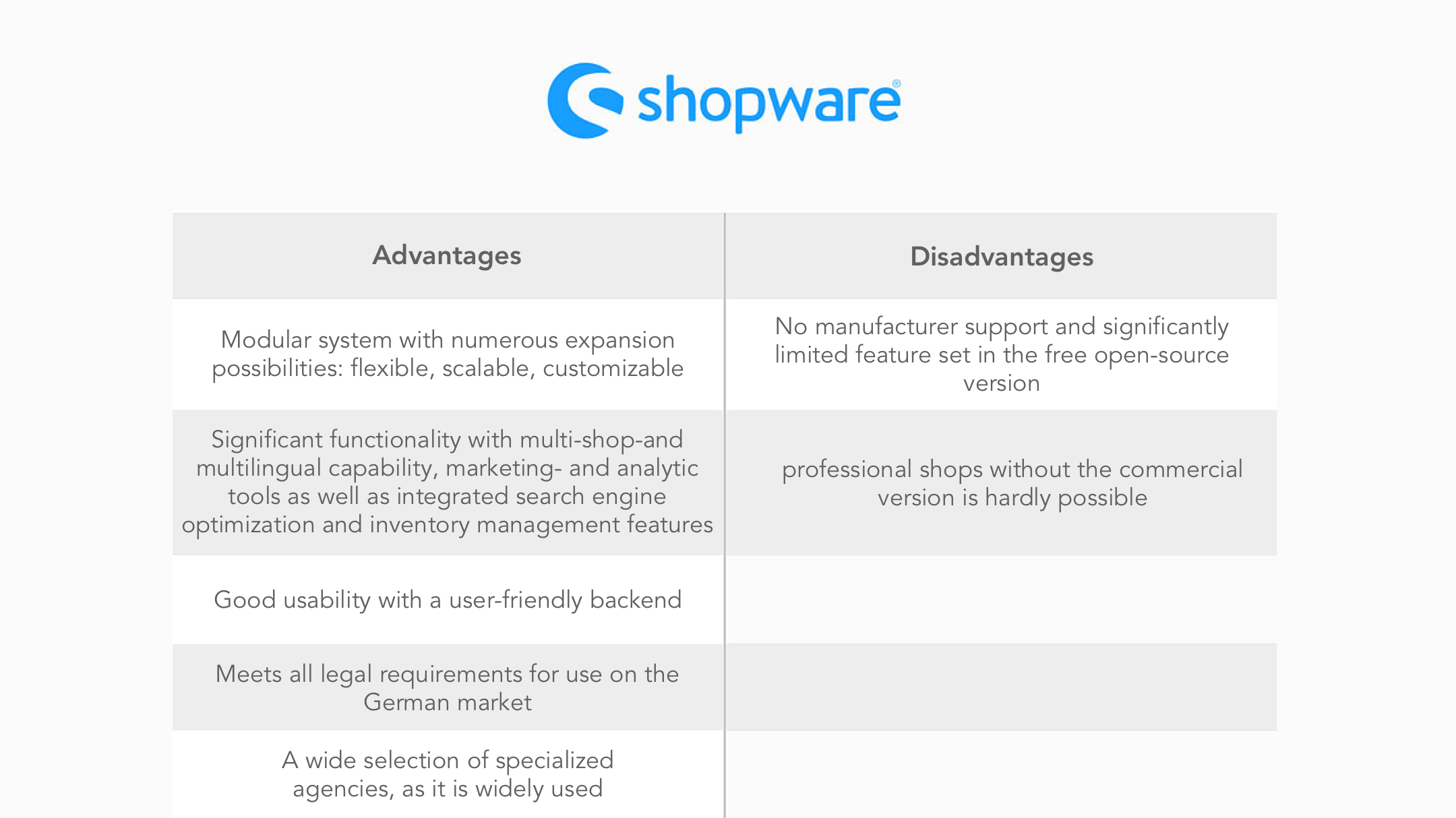
Magento is an open source system released in 2008, written in PHP and based on the Zend Framework, which was acquired by the Adobe Group in 2018. The software is also available in a dual licensing system with two versions: Magento Open Source (free) and Magento Commerce (paid). Both versions are based on the same core, with differences mainly in warranty, support and integrated features.
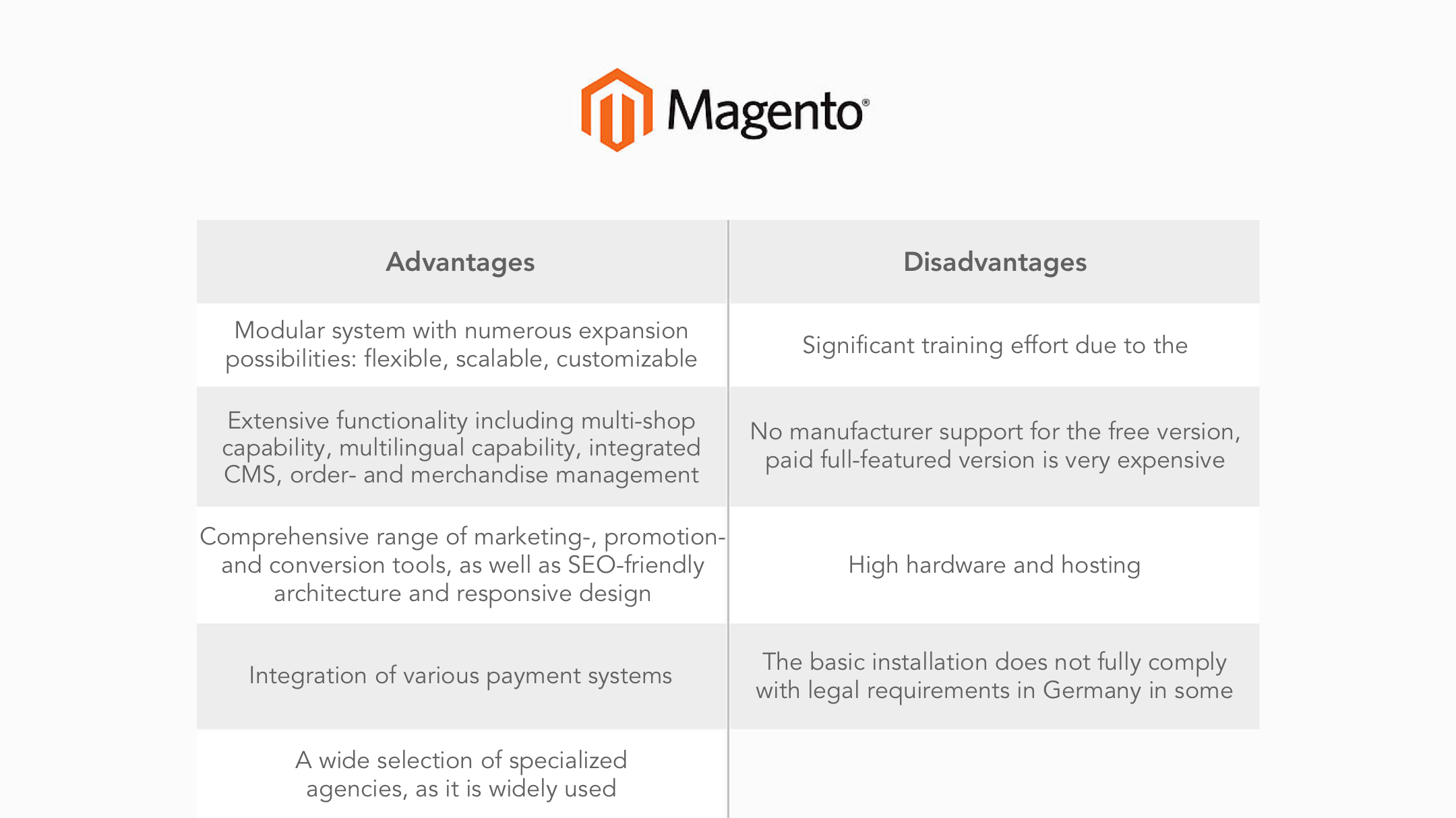
The commercial shop system was developed in and for Germany on PHP basis and is available since 2007 in a free version and several paid editions with different features.
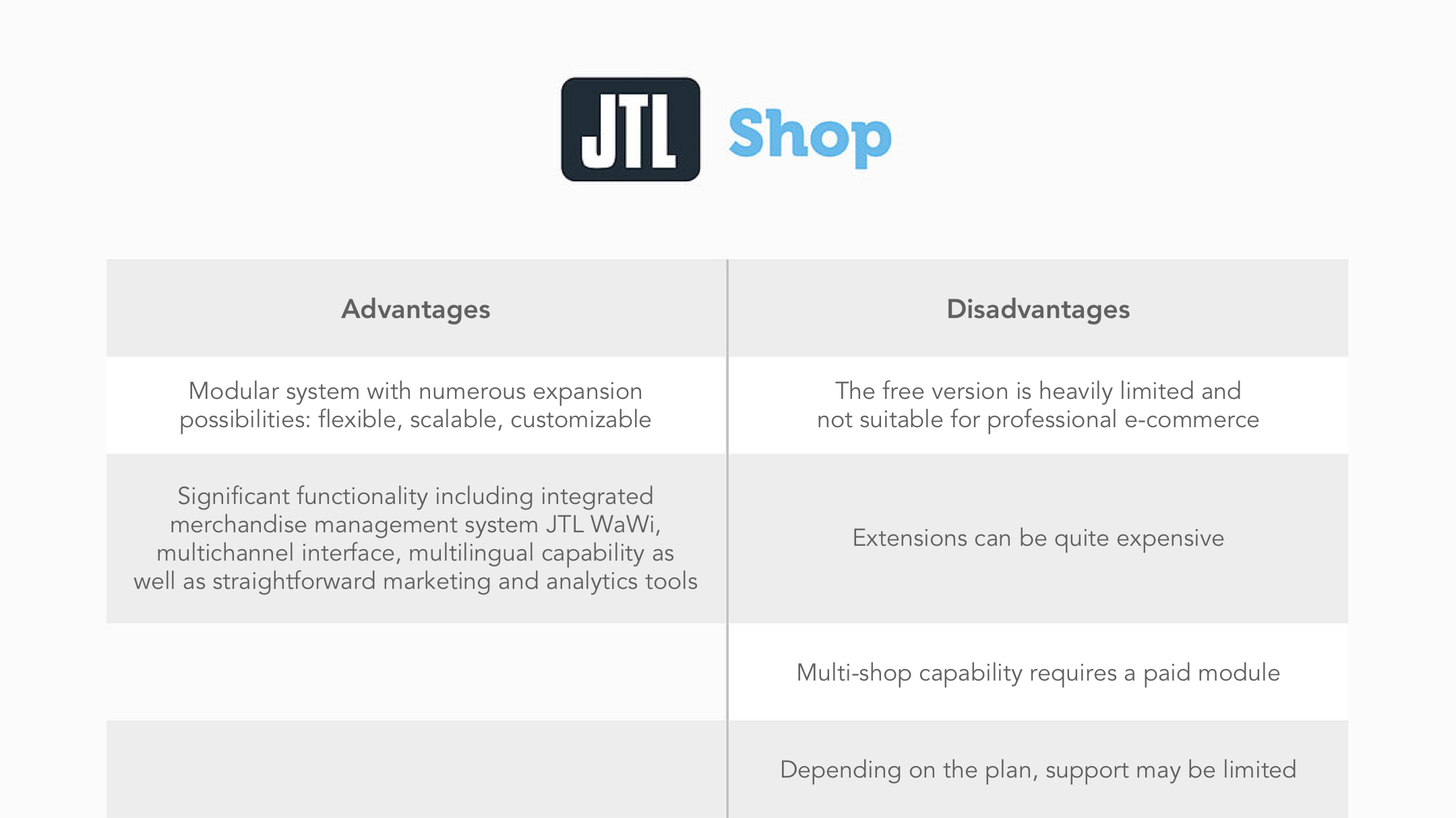
The PHP-based shop system is a product of OXID eSales AG, based in Freiburg, Germany. There is a free open source community edition as well as the paid versions Professional and Enterprise.
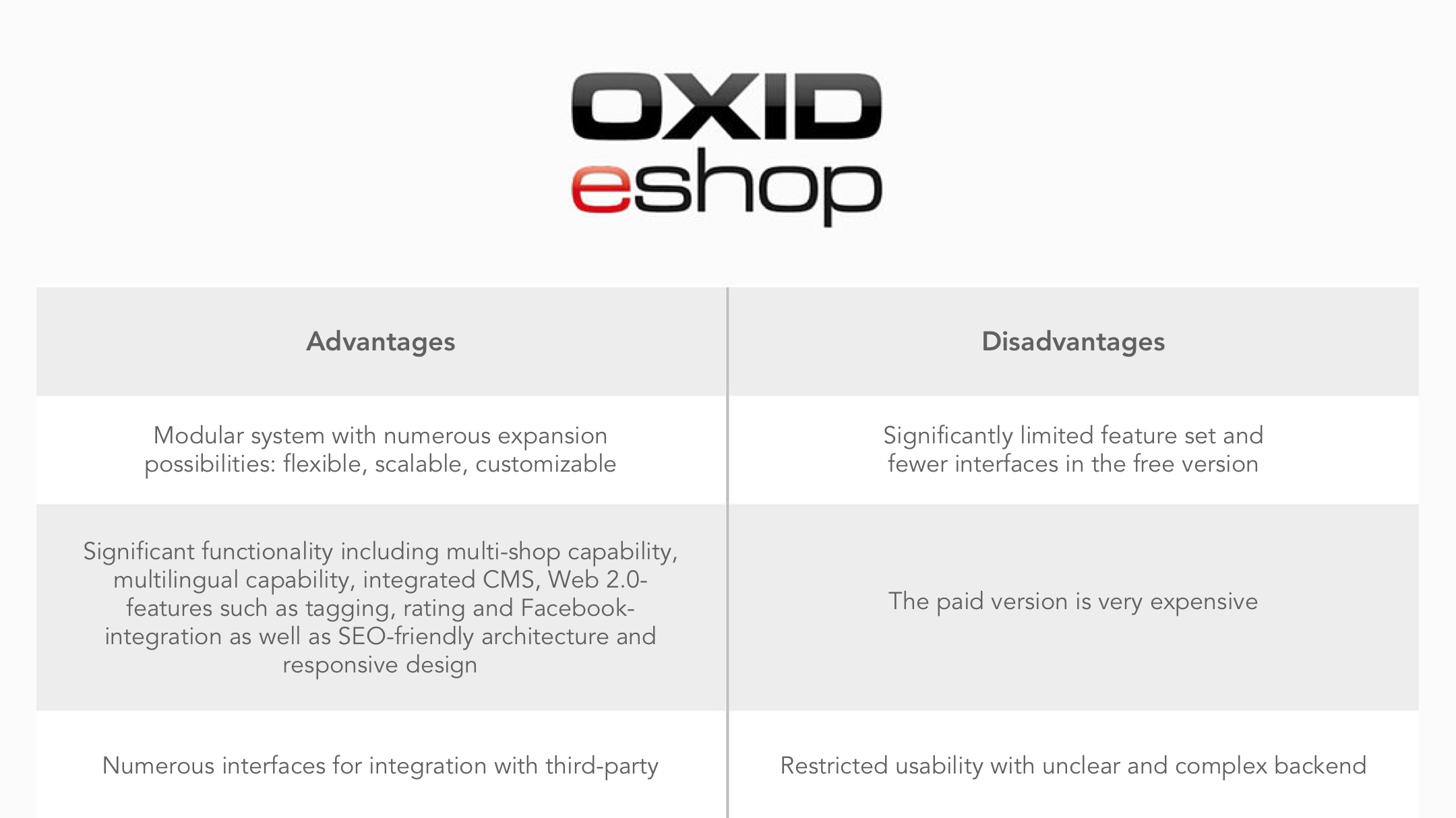
The PHP-based shop system is developed by Gambio GmbH in Bremen, Germany. It has an open source license, but is only offered in combination with a paid support package.
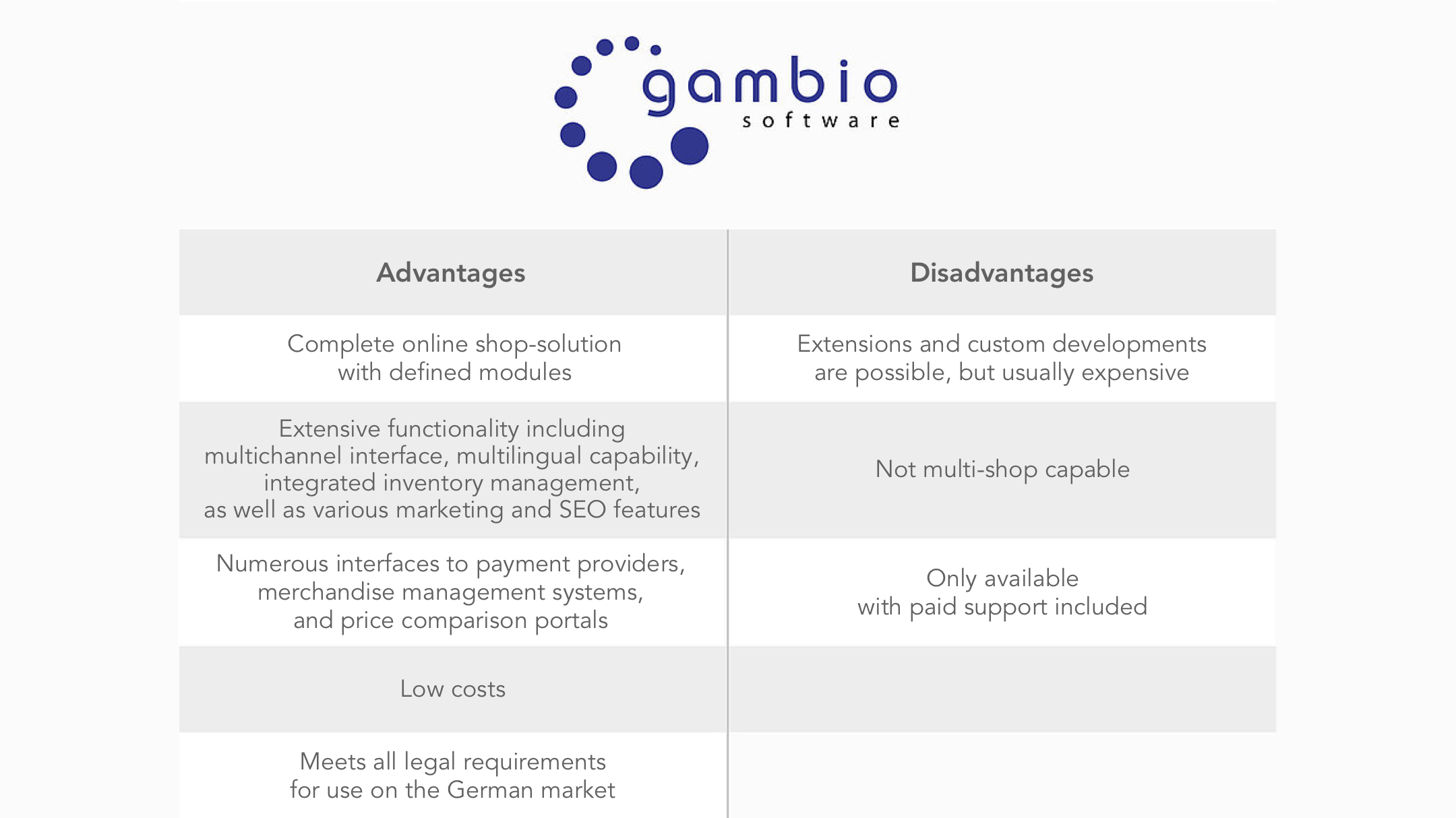
The shop system developed in France is based on PHP and distributed as free open source software.
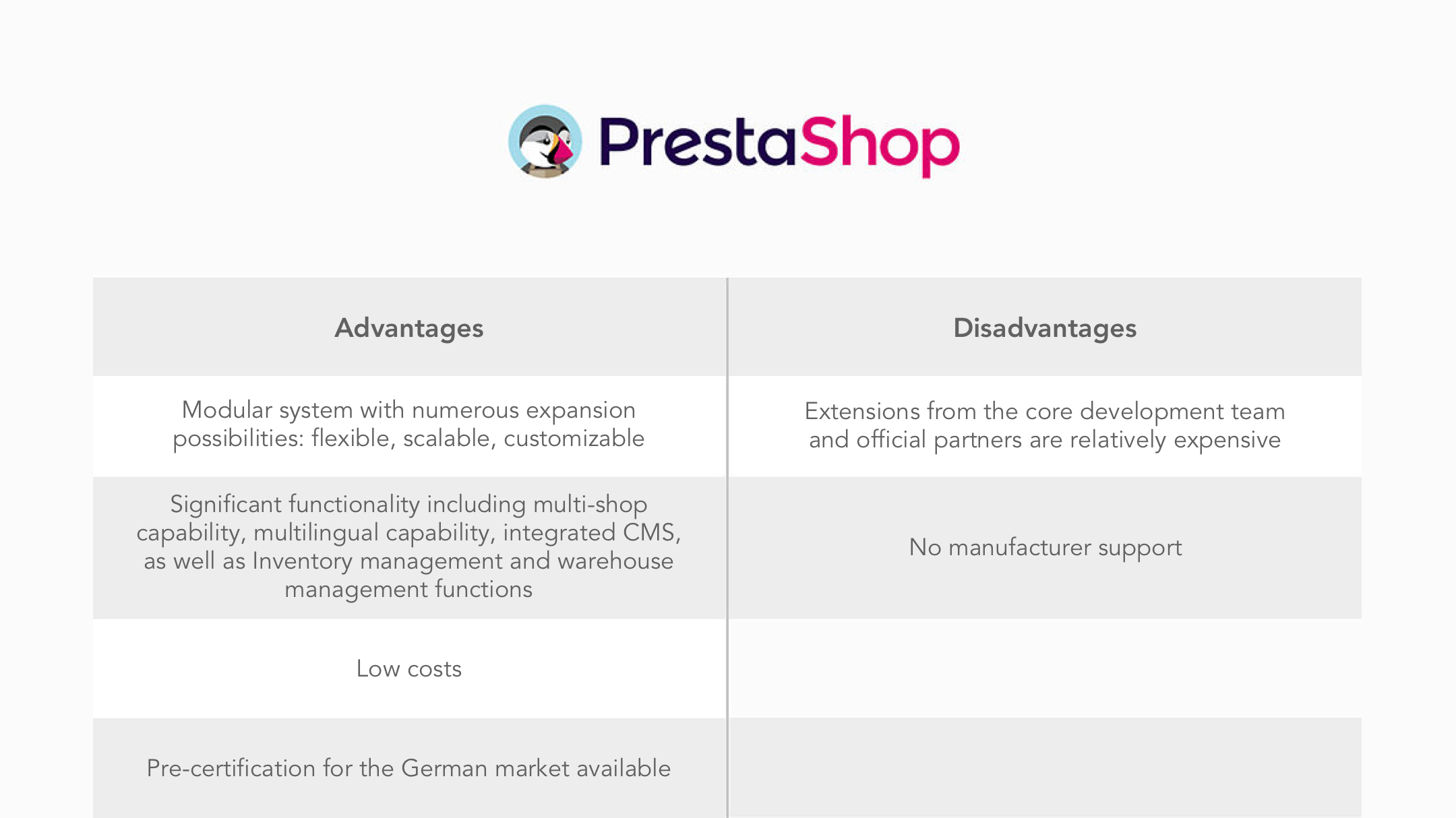
Spryker is a framework-style shop system based on PHP and located in Berlin. Licensing costs vary depending on the number of developers.
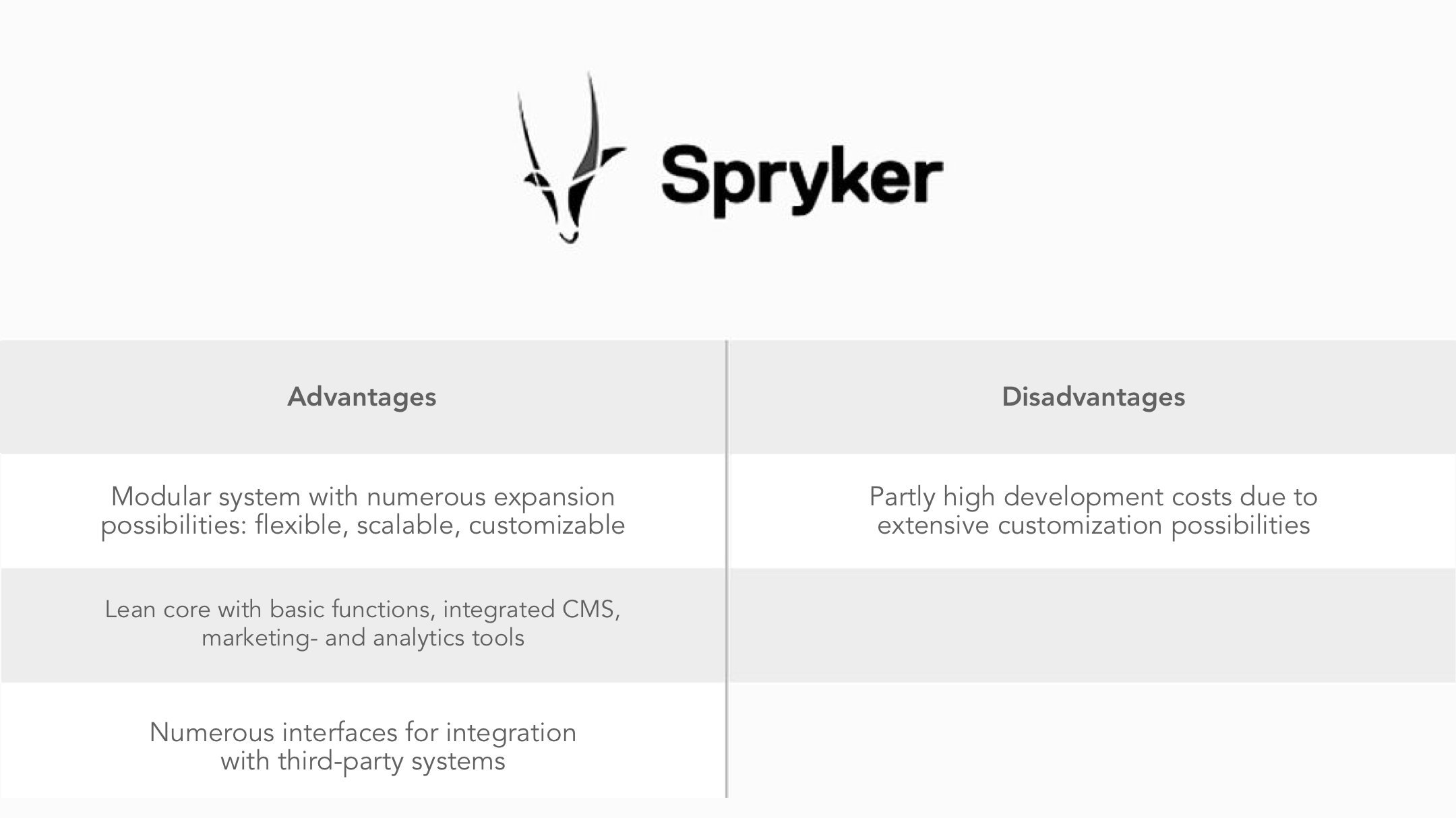
As with content management systems, there is no one solution for every e-commerce project - but there are clear areas that can be identified: Magento and Oxid eShop are particularly suitable for large and very complex projects. Gambio, on the other hand, is only suitable for small projects, while Spryker is a niche product for individualists. The systems Shopware, JTL Shop and PrestaShop are suitable for small to large web shops. For a direct comparison of two shop systems, we recommend our blog post “Shopware vs. Magento: Which shop system is better?” Our clear favorite is Shopware: The wide range of functions, the focus on the German market with the option of internationalization and the particularly good user friendliness are the deciding factors.
But not only the shop system is important, also the realization: A simple shopping platform in the style of a department store catalog will not bring you high sales figures in today's competition. Customers want added value: make it clear what sets you apart from the competition, provide service-oriented interaction, and create high-quality, relevant content - this is how you inspire your customers.
Need some creative input? Do you have ideas, but no technical knowledge of how to implement them? Get in touch with us! We will be happy to advise you and work with you to create an exciting shopping experience for your customers. You can reach us by phone at +49 711 184 206-0 or by email at hello@wus.de.